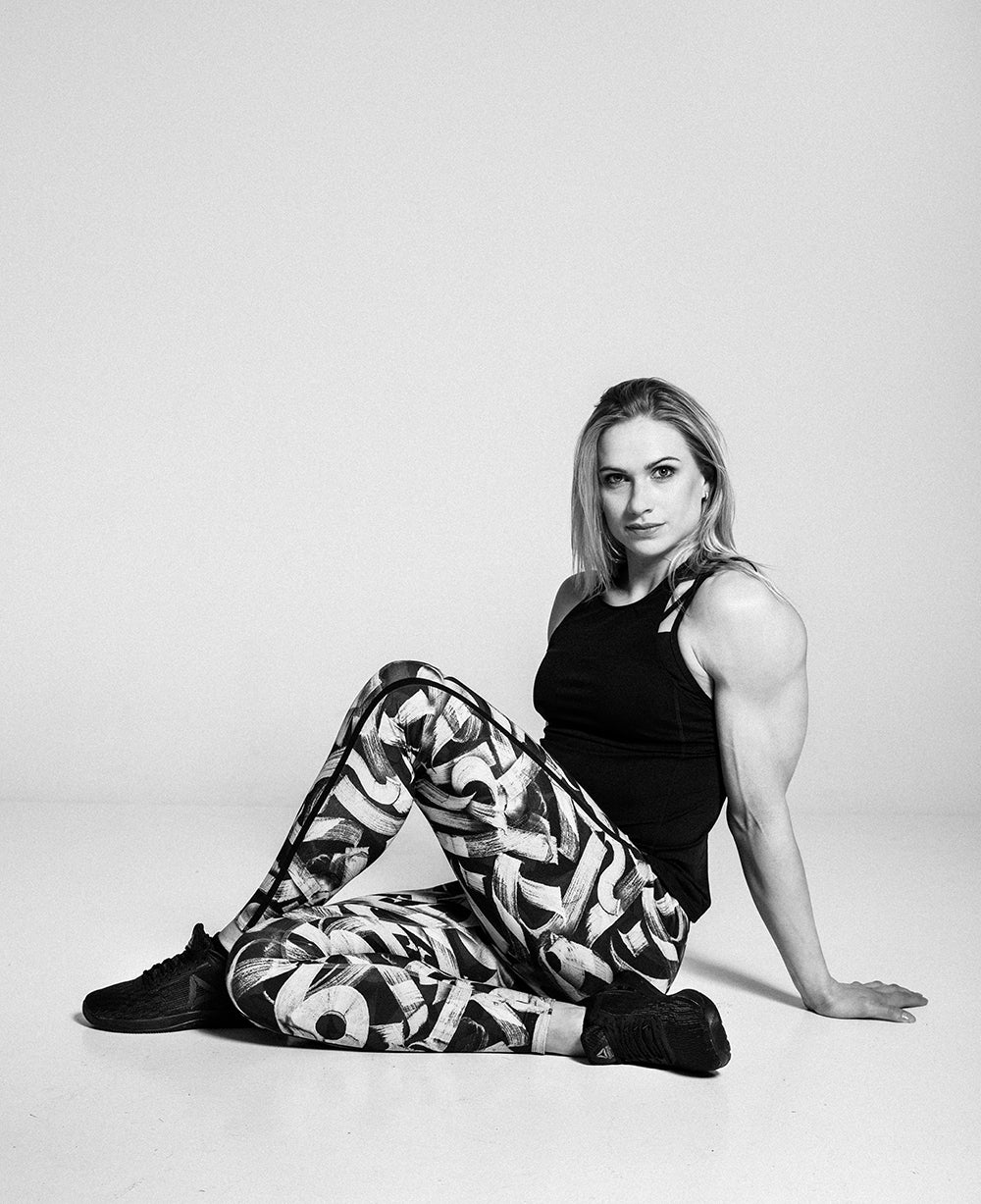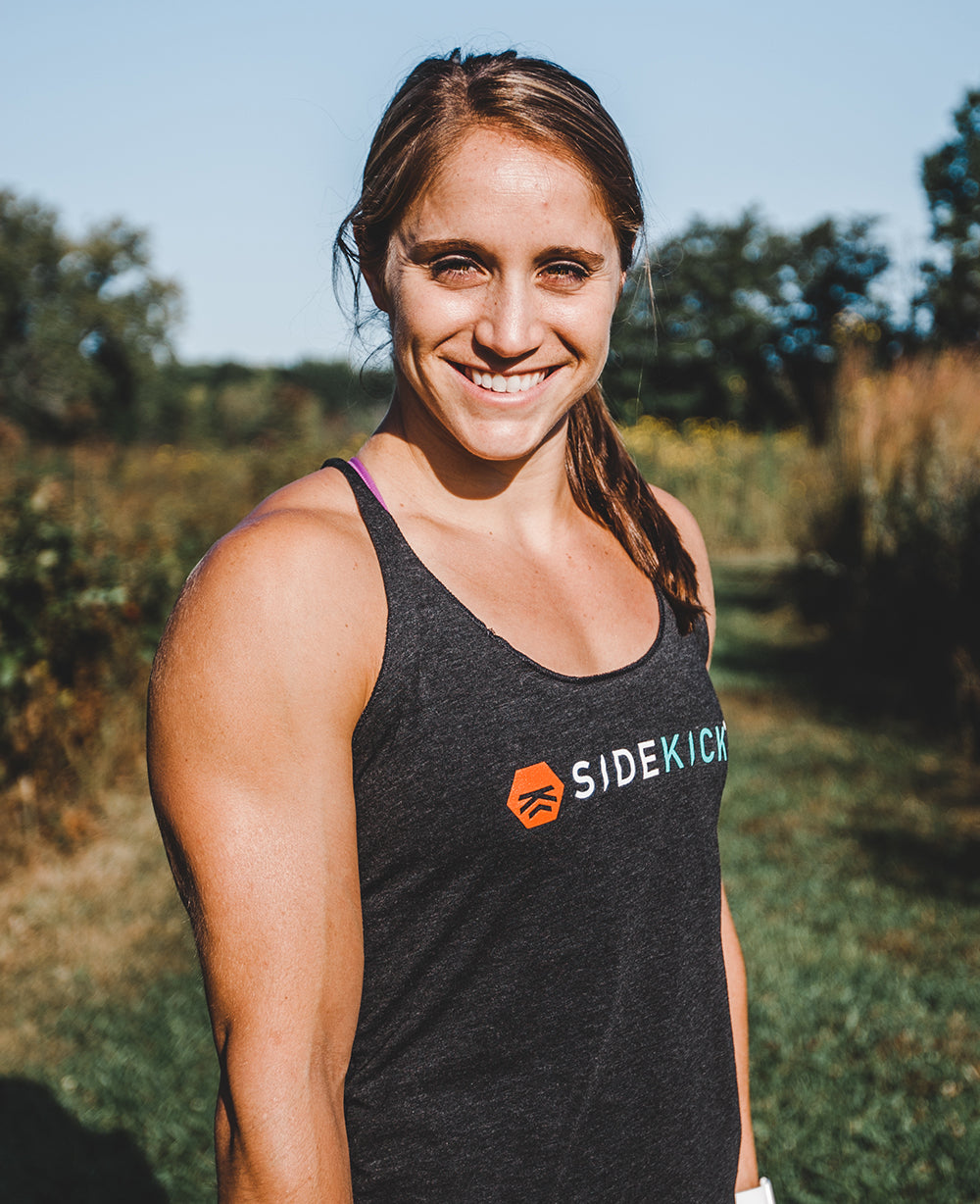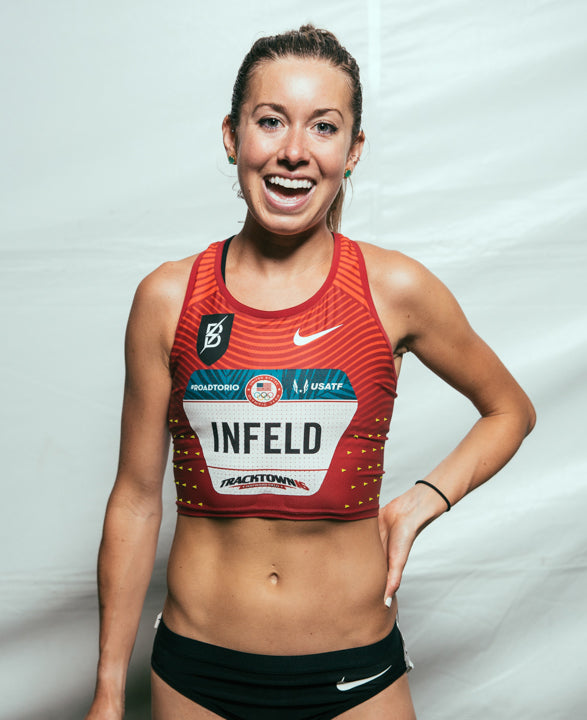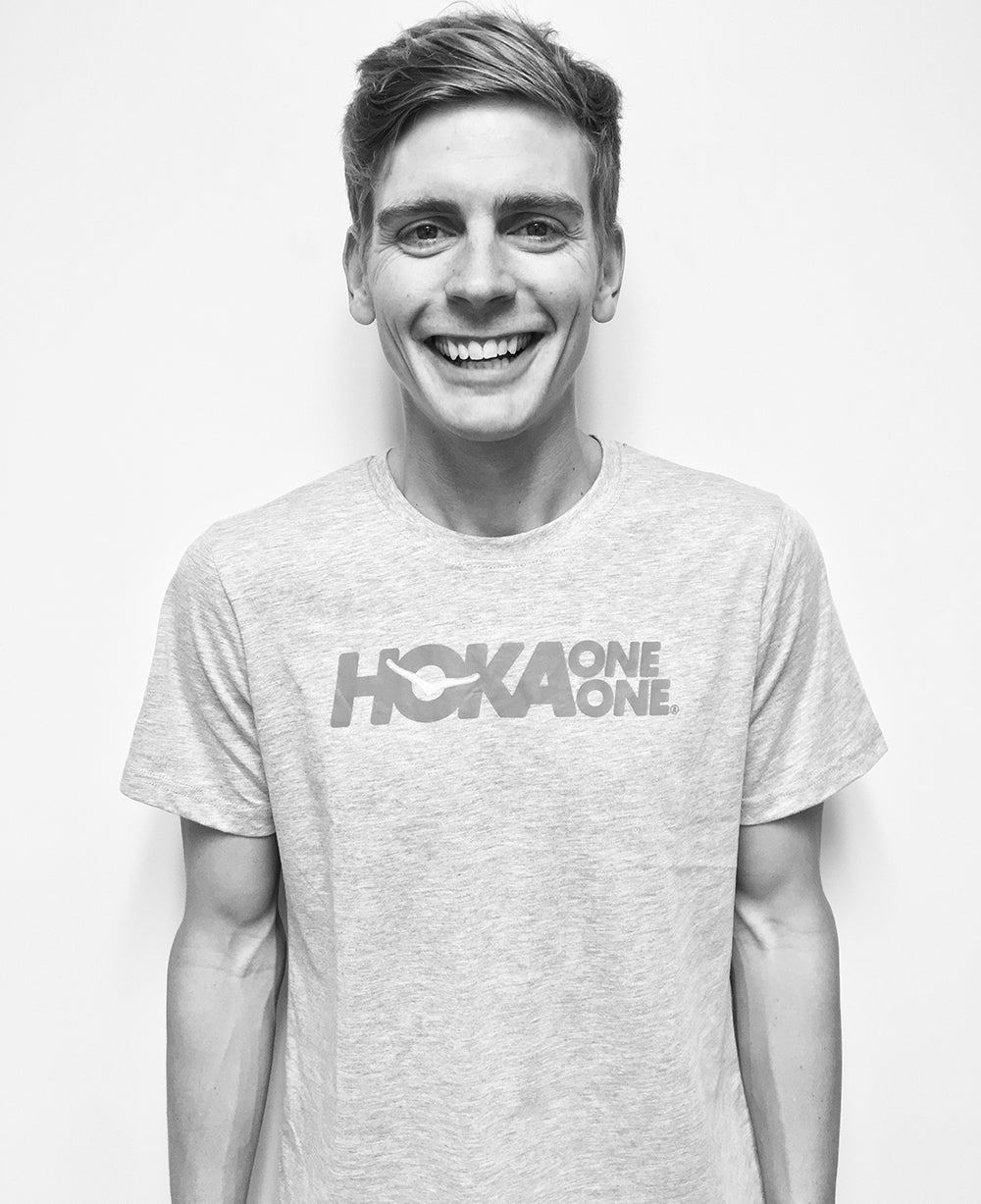

COLLEEN FOTSCH
CROSSFIT
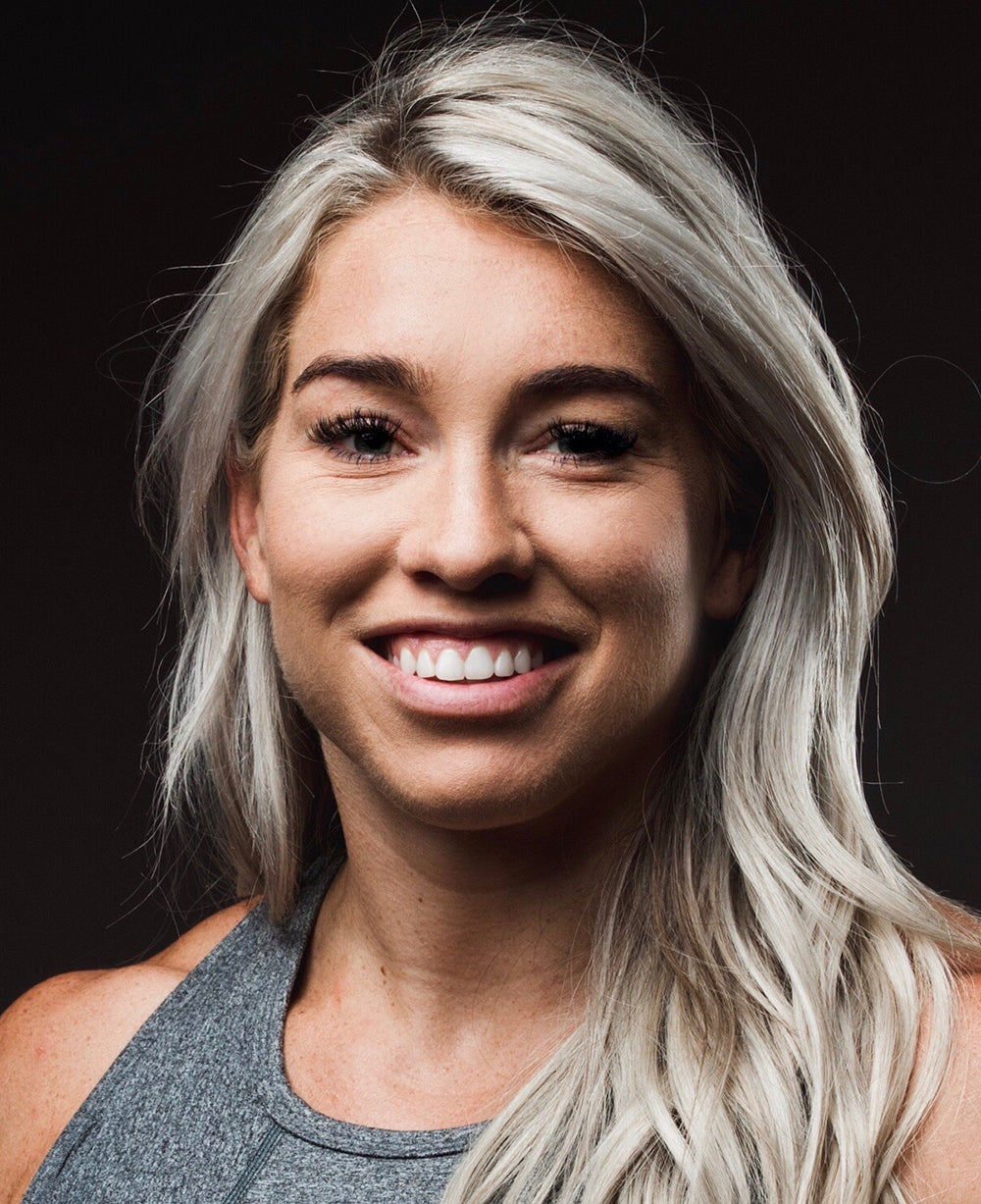
A former collegiate swimmer at UK Berkley where she was a two-time national champ, American record holder, and Olympic qualifier, Colleen Fotsch is a three time regional CrossFit competitor best known for her first-place finish worldwide in Open Workout 15.5 finishing the 144-rep couplet of rowing and thrusters in 6:26, faster than any woman in the world. Colleens best finish was her place 7th in the world at the California Regional in 2016. Most recently Colleen was recruited by the USA Bobsled team along with Kelsey Kiel, and is busy training for team trials in November and December, while also staying on top of her Crossfit.
STATS
5 time All American
2 time NCAA Championship swimmer
2 time Olympic trials qualifier
2017 CrossFit games team athlete - 4th place
2019 CrossFit games individual athlete
Please tell us a bit about yourself and what you are currently training for
My name is Colleen Fotsch, I am the oldest of six kids, I was born in CA and we moved around a bunch growing up. We lived in California, Illinois, and Maryland. I’m currently training to be on the USA Women’s bobsled team.
How did you get introduced to your sport (what is your athletic background)?
I grew up playing a lot of sports but decided to just focus on swimming going into high school. I swam at UC Berkeley and we won NCAA championships in 2011 and 2012. I was also fortunate to be on the 200 medley relay that won NCAAs and broke an American record. I qualified for Olympic Trials in 2008 and 2012 in the 100m butterfly. I found Crossfit about a year after graduating college and was immediately hooked. I went to the Crossfit Games in 2017 on a team where we placed 4th in the world. In 2019 I qualified for my first individual Crossfit Games and placed top 30 in the world. And for the last month, have been training to be on the USA Women’s bobsled team.
What do you enjoy the most about your sport?
I really enjoy pushing myself to my limits and beyond them. When I get to express myself though athletic performance I truly feel that I’m exactly where I am supposed to be. I love how much sport teaches me about myself and has pushed me to grow into the person I am and continues to push me each and every day. It has taught me to be resilient, to never settle, and that I’m stronger and tougher than the obstacles I will face. It also has taught me that I can really do anything I truly work hard for. I also love being a part of a team and building relationships through sport.
Who are the people you rely on to help you perform?
I would say it’s a combination of my coaches, my family, God, my close friends, and the team of people I see for recovery and PT work, they truly allow me to train as hard as I do.
What does your typical training day look like?
A typical day is getting up around 6:00am, having a little snack and some coffee and then heading to the gym for my first session. After that I’ll come home, eat, and then work on school work. I’m currently finishing up a masters in Kinesiology and an undergrad certificate in data analytics. I then go back to the gym around 11 or 12 for my second session. Then I go back home, work on more school work till around 5. And then I chill for the rest of the day. I’ll usually hang out with a friend, call my family, or just watch some Netflix or if a football game is on I will be watching that.
What is your biggest challenge right now?
My biggest challenge right now is mastering the technique of bobsledding. I have also started working on my sprinting technique for the first time. It’s definitely an adjustment and there are many times I have to check my ego a bit and be ok with making some mistakes along the way. But I am really enjoying learning this sport and it’s excited to learn about how to sprint more efficiently.
What does it take to succeed at the highest levels in your sport?
To succeed at the highest levels in this sport you need grit, ambition, resilience, mental toughness, and an overall good/positive attitude.
Tell me about a recent injury you've had and how you recovered?
In 2016 after competing in regionals, I got an MRI on my left shoulder. I had struggled with shoulder pain for years throughout my swimming career. It wasn’t extremely painful but I was having to modify too many workouts so I went to get the MRI for mostly just peace of mind. Turns out my supraspinatus was 80%. I got surgery soon after and the rehab process was much worse than I anticipated. I was in a really bad headspace for most of my rehab process. I contemplated ever coming back to sport and I really relied on my faith and my family and friends to keep my motivated and to keep a positive outlook. Through a ton of hard work, lots of tears, and patience I was able to comeback in the 2017 season and compete on a team at the Crossfit Games.
What is the achievement you are most proud of?
I don’t know if I can choose one : ) But I would say breaking an American Record, going to the Crossfit Games individually especially the sled event where I placed 2nd overall. I am also very proud of getting my masters and proving that I can succeed in an academic setting as well.
How important is mental preparation to competition & training? How do you prepare yours?
Mental preparation is a huge component to competition and training. At the top of elite sports, everyone is working hard and so being mentally strong is extremely important. I would say that mental preparation is an everyday thing and that it’s practiced each day so it can be there on game day. I’ve enjoyed doing some journal reflection as well as practice my self talk during training each and every day. I think it’s important to know what to tell yourself on your good days but maybe even more important what you tell yourself on the bad or not as good days.
How do you stay motivated?
I don’t think it’s about staying motivated because motivation can be fleeting. I’m not motivated every single second of every single day but I am disciplined in my work ethic and my routine. And I have goals and dreams and I’m aware of what I need to do in order to achieve them. So each day I’m making decisions that align with those goals and I owe it to myself to choose those aligning actions each day even when it’s not the easiest.
What does it feel like to win and what has been your favorite victory so far?
Winning is an incredible feeling and when it happens it’s like a feeling of being on top of the world and feeling total happiness, peace, and excitement. There’s nothing like the feeling when all the hard work, tough days, and commitment all come together and you get to stand on stop of the podium.
What, if any, injuries are you currently dealing with when training and competing? How are you dealing with that?
Fortunately I have no major injuries. As I transition into a new sport there is definitely new soreness/tightness in areas. I’ve been really working on making sure my hips, hamstrings, and achilles stay healthy as I add in the pushing and sprinting.
What role does recovery play in your athletic success? How much time do you dedicate to it each week?
Recovery is a HUGE part of my training. I can train as hard as I want and if I don’t put in the time to recover I don’t maximize the training benefits and could potentially end up hurt.
Can you walk us through your recovery programming? (PT, massage therapy, foam rolling etc...)
I see a PT on a weekly basis for dry needling. I will get a massage about once a month depending on how I feel. I have a lot of recovery tools at home that I utilize on a daily basis. My favorites right now are the Sidekick tool and the Fuse vibration therapy device. The Sidekick tool I have been using a lot on my calves and achilles lately which has made a huge difference. My upper back tends to tighten up a lot and so the fuse device is a game changer. I use it at least twice a day.
What is the best recovery tip you've ever received?
On rest days still get up and move. And find recovery equipment or exercises that you can do on your own. On my recovery days I make sure I get about 30-45 min of blood flow whether that is on a bike or just going for a walk, it makes a huge difference. I also have learned how to better aid in my recovery at home using the sidekick tools. That way I can stay on top of my recovery and maintenance work.
What goals do you have for yourself for 2021?
To make the USA women’s bobsled team. To be successful in my current classes. And continue to grow my YouTube channel.
What advice would you give other athletes looking to follow in your footsteps?
Get into a routine, find a coach that understand you and your goals, and find what you love and have fun!
How can someone find out more about you?
My instagram is colleenfotsch and I’m Colleen Fotsch on YouTube : )
What is your favorite Sidekick tool and Why?
I’d have to say it’s a tie between the echo muscle scraper and the fuse vibration therapy device. I’ve been getting Grasten work done on my for years and I love that I now am able to do this on my own at home. The fuse device just feels amazing on my upper back and really helps me open up my upper body before training, a competition, or any time of the day.
What is the best part about being a Sidekick Athlete?
The best part of being a sidekick athlete is being a part of a family that is looking to help people step their recovery game up by giving them the tools and knowledge to take care of themselves so they can continue to life healthy lives and do what they love to do!
My upper back tends to tighten up a lot and so the fuse device is a game changer. I use it at least twice a day.
COLLEEN'S FAVOURITE SIDEKICK TOOL

STATS
5 time All American
2 time NCAA Championship swimmer
2 time Olympic trials qualifier
2017 CrossFit games team athlete - 4th place
2019 CrossFit games individual athlete
COLLEEN FOTSCH
CROSSFIT ATHLETE
A former collegiate swimmer at UK Berkley where she was a two-time national champ, American record holder, and Olympic qualifier, Colleen Fotsch is a three time regional CrossFit competitor best known for her first-place finish worldwide in Open Workout 15.5 finishing the 144-rep couplet of rowing and thrusters in 6:26, faster than any woman in the world. Colleens best finish was her place 7th in the world at the California Regional in 2016. Most recently Colleen was recruited by the USA Bobsled team along with Kelsey Kiel, and is busy training for team trials in November and December, while also staying on top of her Crossfit.
Please tell us a bit about yourself and what you are currently training for
My name is Colleen Fotsch, I am the oldest of six kids, I was born in CA and we moved around a bunch growing up. We lived in California, Illinois, and Maryland. I’m currently training to be on the USA Women’s bobsled team.
How did you get introduced to your sport (what is your athletic background)?
I grew up playing a lot of sports but decided to just focus on swimming going into high school. I swam at UC Berkeley and we won NCAA championships in 2011 and 2012. I was also fortunate to be on the 200 medley relay that won NCAAs and broke an American record. I qualified for Olympic Trials in 2008 and 2012 in the 100m butterfly. I found Crossfit about a year after graduating college and was immediately hooked. I went to the Crossfit Games in 2017 on a team where we placed 4th in the world. In 2019 I qualified for my first individual Crossfit Games and placed top 30 in the world. And for the last month, have been training to be on the USA Women’s bobsled team.
What do you enjoy the most about your sport?
I really enjoy pushing myself to my limits and beyond them. When I get to express myself though athletic performance I truly feel that I’m exactly where I am supposed to be. I love how much sport teaches me about myself and has pushed me to grow into the person I am and continues to push me each and every day. It has taught me to be resilient, to never settle, and that I’m stronger and tougher than the obstacles I will face. It also has taught me that I can really do anything I truly work hard for. I also love being a part of a team and building relationships through sport.
Who are the people you rely on to help you perform?
I would say it’s a combination of my coaches, my family, God, my close friends, and the team of people I see for recovery and PT work, they truly allow me to train as hard as I do.
What does your typical training day look like?
A typical day is getting up around 6:00am, having a little snack and some coffee and then heading to the gym for my first session. After that I’ll come home, eat, and then work on school work. I’m currently finishing up a masters in Kinesiology and an undergrad certificate in data analytics. I then go back to the gym around 11 or 12 for my second session. Then I go back home, work on more school work till around 5. And then I chill for the rest of the day. I’ll usually hang out with a friend, call my family, or just watch some Netflix or if a football game is on I will be watching that.
What is your biggest challenge right now?
My biggest challenge right now is mastering the technique of bobsledding. I have also started working on my sprinting technique for the first time. It’s definitely an adjustment and there are many times I have to check my ego a bit and be ok with making some mistakes along the way. But I am really enjoying learning this sport and it’s excited to learn about how to sprint more efficiently.
What does it take to succeed at the highest levels in your sport?
To succeed at the highest levels in this sport you need grit, ambition, resilience, mental toughness, and an overall good/positive attitude.
Tell me about a recent injury you've had and how you recovered?
In 2016 after competing in regionals, I got an MRI on my left shoulder. I had struggled with shoulder pain for years throughout my swimming career. It wasn’t extremely painful but I was having to modify too many workouts so I went to get the MRI for mostly just peace of mind. Turns out my supraspinatus was 80%. I got surgery soon after and the rehab process was much worse than I anticipated. I was in a really bad headspace for most of my rehab process. I contemplated ever coming back to sport and I really relied on my faith and my family and friends to keep my motivated and to keep a positive outlook. Through a ton of hard work, lots of tears, and patience I was able to comeback in the 2017 season and compete on a team at the Crossfit Games.
What is the achievement you are most proud of?
I don’t know if I can choose one : ) But I would say breaking an American Record, going to the Crossfit Games individually especially the sled event where I placed 2nd overall. I am also very proud of getting my masters and proving that I can succeed in an academic setting as well.
How important is mental preparation to competition & training? How do you prepare yours?
Mental preparation is a huge component to competition and training. At the top of elite sports, everyone is working hard and so being mentally strong is extremely important. I would say that mental preparation is an everyday thing and that it’s practiced each day so it can be there on game day. I’ve enjoyed doing some journal reflection as well as practice my self talk during training each and every day. I think it’s important to know what to tell yourself on your good days but maybe even more important what you tell yourself on the bad or not as good days.
How do you stay motivated?
I don’t think it’s about staying motivated because motivation can be fleeting. I’m not motivated every single second of every single day but I am disciplined in my work ethic and my routine. And I have goals and dreams and I’m aware of what I need to do in order to achieve them. So each day I’m making decisions that align with those goals and I owe it to myself to choose those aligning actions each day even when it’s not the easiest.
What does it feel like to win and what has been your favorite victory so far?
Winning is an incredible feeling and when it happens it’s like a feeling of being on top of the world and feeling total happiness, peace, and excitement. There’s nothing like the feeling when all the hard work, tough days, and commitment all come together and you get to stand on stop of the podium.
What, if any, injuries are you currently dealing with when training and competing? How are you dealing with that?
Fortunately I have no major injuries. As I transition into a new sport there is definitely new soreness/tightness in areas. I’ve been really working on making sure my hips, hamstrings, and achilles stay healthy as I add in the pushing and sprinting.
What role does recovery play in your athletic success? How much time do you dedicate to it each week?
Recovery is a HUGE part of my training. I can train as hard as I want and if I don’t put in the time to recover I don’t maximize the training benefits and could potentially end up hurt.
Can you walk us through your recovery programming? (PT, massage therapy, foam rolling etc...)
I see a PT on a weekly basis for dry needling. I will get a massage about once a month depending on how I feel. I have a lot of recovery tools at home that I utilize on a daily basis. My favorites right now are the Sidekick tool and the Fuse vibration therapy device. The Sidekick tool I have been using a lot on my calves and achilles lately which has made a huge difference. My upper back tends to tighten up a lot and so the fuse device is a game changer. I use it at least twice a day.
What is the best recovery tip you've ever received?
On rest days still get up and move. And find recovery equipment or exercises that you can do on your own. On my recovery days I make sure I get about 30-45 min of blood flow whether that is on a bike or just going for a walk, it makes a huge difference. I also have learned how to better aid in my recovery at home using the sidekick tools. That way I can stay on top of my recovery and maintenance work.
What goals do you have for yourself for 2021?
To make the USA women’s bobsled team. To be successful in my current classes. And continue to grow my YouTube channel.
What advice would you give other athletes looking to follow in your footsteps?
Get into a routine, find a coach that understand you and your goals, and find what you love and have fun!
How can someone find out more about you?
My instagram is colleenfotsch and I’m Colleen Fotsch on YouTube : )
What is your favorite Sidekick tool and Why?
I’d have to say it’s a tie between the echo muscle scraper and the fuse vibration therapy device. I’ve been getting Grasten work done on my for years and I love that I now am able to do this on my own at home. The fuse device just feels amazing on my upper back and really helps me open up my upper body before training, a competition, or any time of the day.
What is the best part about being a Sidekick Athlete?
The best part of being a sidekick athlete is being a part of a family that is looking to help people step their recovery game up by giving them the tools and knowledge to take care of themselves so they can continue to life healthy lives and do what they love to do!
My upper back tends to tighten up a lot and so the fuse device is a game changer. I use it at least twice a day.













